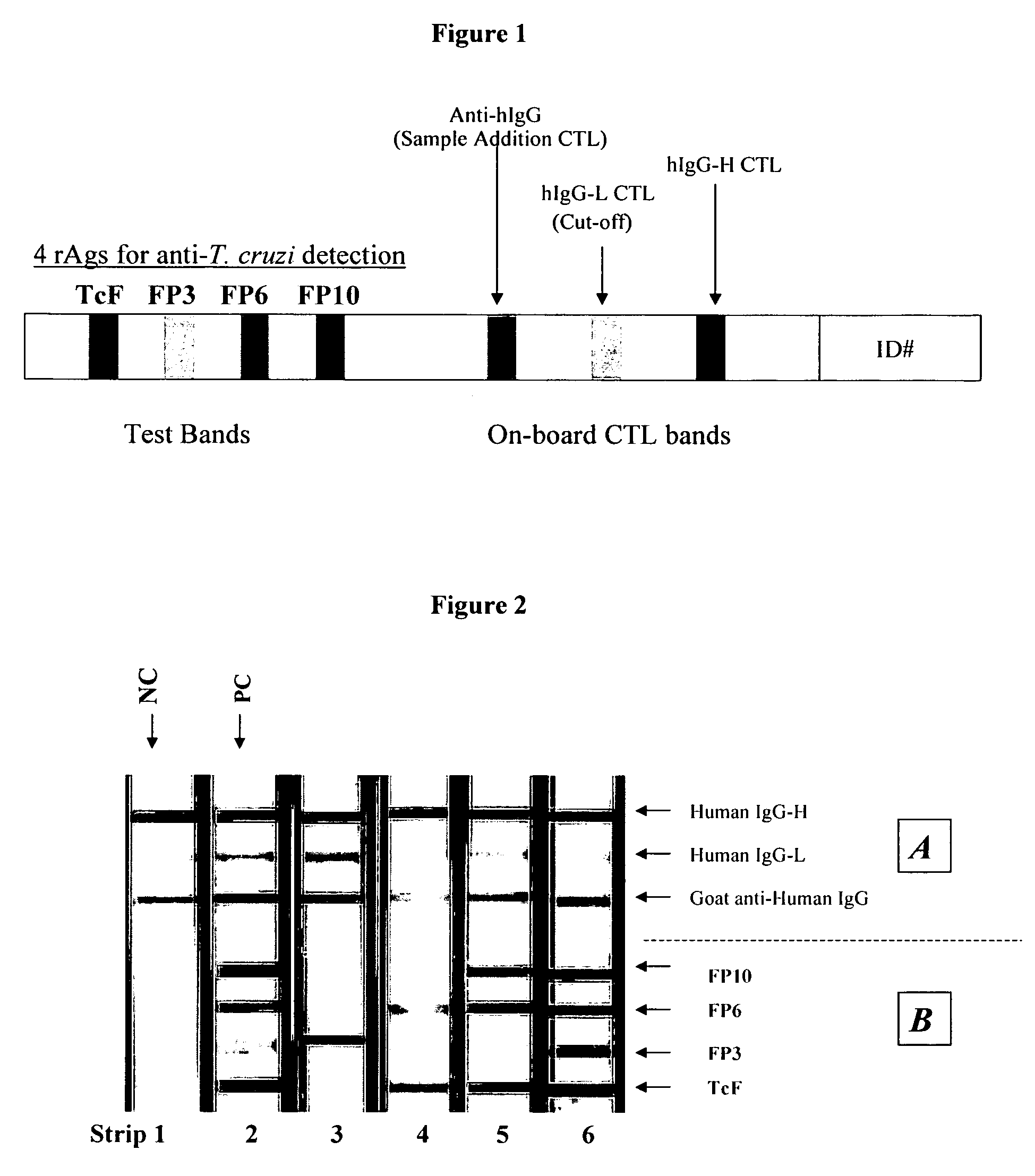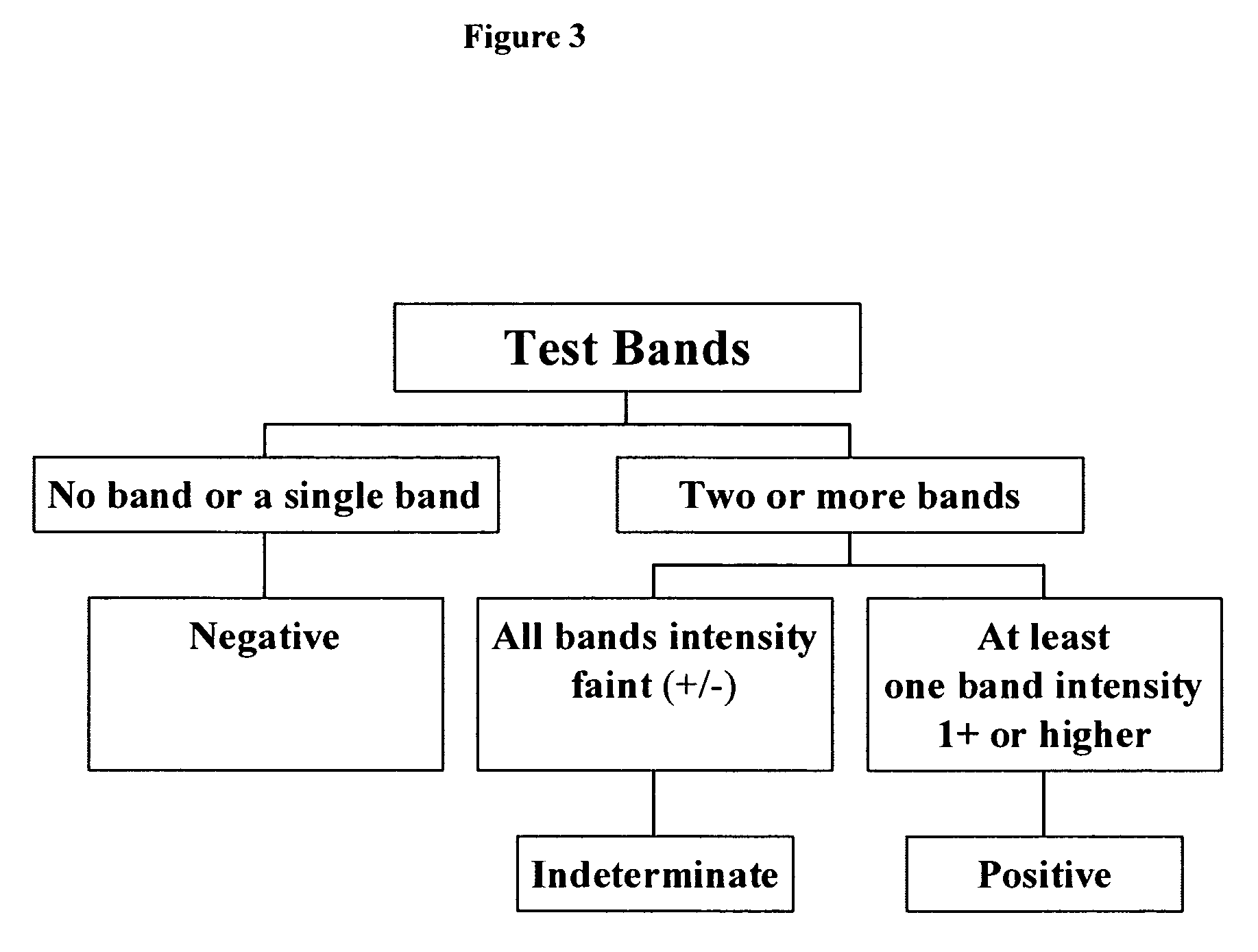Methods for the detection and diagnosis of Trypanosoma cruzi infection
a technology of trypanosoma cruzi and detection method, which is applied in the field of diagnosis of trypanosoma cruzi infection, can solve the problems of /i>infection being a threat to the u.s. blood supply, no vaccine to prevent the transmission of i>t, and chemotherapy being largely ineffectiv
- Summary
- Abstract
- Description
- Claims
- Application Information
AI Technical Summary
Benefits of technology
Problems solved by technology
Method used
Image
Examples
example 1
Immunoblot Assay Format
[0053]Immunostrip preparation. Solutions of human IgG-high concentration (“IgG-H”), human IgG-low concentration (“IgG-L”), goat anti-human IgG (the 3 on-board control bands), as well as the recombinant antigens (“rAgs”) FP10, FP6, FP3, and TcF (the 4 test bands) were prepared. Specifically, each protein was dissolved in a pH 7, 20 mM sodium 3-(N-morpholinol-2-hydroxypropanesulfonate buffer. Using a microprocessor controlled XYZ3050 dispensing system from Bio-Dot (Irvine, Calif.) 1 micro-liter per cm of each protein was jetted on to nitrocellulose membrane sheets (0.45 micron, 5×30 cm; Whatman Schleicher & Schell, Keene, N.H.) in parallel lines in the relative positions depicted in FIG. 1. The concentrations of the jetting solutions were as follows: TcF at 75 microgram / ml; FPP3 at 0.4 microgram / ml; FP6 at 0.7 microgram / ml; FP10 at 6 microgram / ml; goat anti-human IgG at 25 microgram / ml; IgG-L at 2.5 microgram / ml and 15 microgram for IgG-H. After drying (37° C., ...
PUM
| Property | Measurement | Unit |
|---|---|---|
| pH | aaaaa | aaaaa |
| pH | aaaaa | aaaaa |
| concentrations | aaaaa | aaaaa |
Abstract
Description
Claims
Application Information
 Login to View More
Login to View More - R&D
- Intellectual Property
- Life Sciences
- Materials
- Tech Scout
- Unparalleled Data Quality
- Higher Quality Content
- 60% Fewer Hallucinations
Browse by: Latest US Patents, China's latest patents, Technical Efficacy Thesaurus, Application Domain, Technology Topic, Popular Technical Reports.
© 2025 PatSnap. All rights reserved.Legal|Privacy policy|Modern Slavery Act Transparency Statement|Sitemap|About US| Contact US: help@patsnap.com


